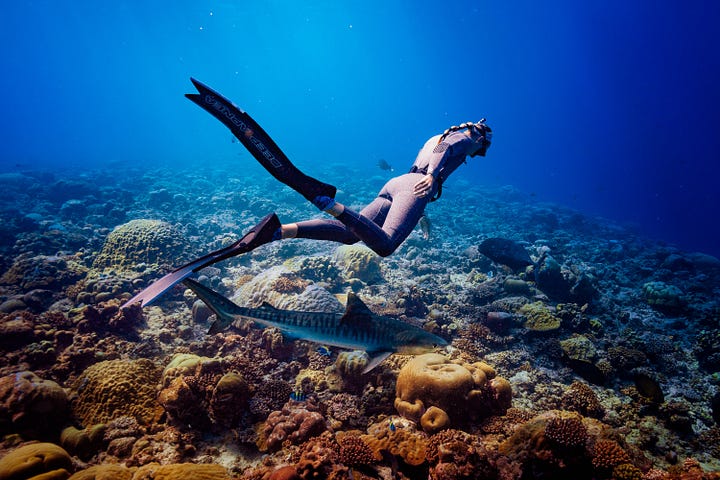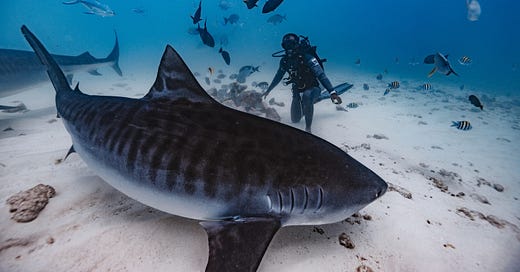Can New Shark Bite Resistant Wetsuits Save Human (and Sharks) Lives?
In a week where a surfer's leg washed ashore after an attack, Andre Borell, CEO of Shark Stop, says yes.
This week 22-year-old surfer Kai McKenzie was attacked by a great white shark in Port Macquarie. He fought it off and made it to shore, where a retired policeman used his dog lead as a tourniquet to stop the blood loss until paramedics arrived. Not long after, Kai’s severed leg washed ashore, was packed in ice and sent to the hospital. His family haven't announced whether it was successfully reattached. He underwent marathon surgery and his situation is described as stable.
I woke up to that news on Tuesday morning, an hour before I was due to chat with Andre Borell, the CEO of Shark Stop. The Australian company makes shark bite-resistant wetsuits using Ultra-High Molecular Weight Polyethylene (UHMWPE). This can be laminated on neoprene to enhance the wetsuit’s shark bite-resistant properties significantly. The material has also been used in prison wardens’ stab-resistant uniforms and ballistic protection. They are designed to reduce the risk of fatal injuries due to blood loss from femoral artery damage.
“The material mitigates the puncture effect of the initial bite, but also the tearing that comes when the shark shakes afterwards,” Borell told me. They have been tested by Flinders University in labs and in great white habitats at Neptune Island, South Australia. They found the average bite force per tooth of a 6.5 metre (21 ft) Great White Shark was 410 newtons. It took an average of 900 newtons to penetrate Shark Stop’s Bite-Resistant wetsuits. In short, they work.
Borell didn’t say it, but it’s an obvious conclusion to make that if McKenzie had been wearing one of the 3mm or 5mm steamers that Shark Stop now sell online, it's a good bet to say his left leg wouldn't have ended up on shore 20 minutes after he did. For divers especially and surfers in sharky waters it seems like an absolute no-brainer. The wetsuits are more expensive (around $1000), and not as flexible as top-of-the-range neoprene, but that’s a trade-off you’d imagine many ocean lovers will take.


It’s no surprise that all this so far has been very human-focused. This type of tragedy made worldwide news and doesn’t tend to force you to think of the shark's perspective. Yet this tech could be a rare win-win for ocean lovers and shark protection advocates.
Borell hadn’t got involved in the company, first as an angel investor, and then as a CEO, from the surfer or diver perspective. He'd discovered the tech, developed by surf industry veteran Haydon Burford, when making the investigative documentary Envoy: Shark Cull. Narrated by Eric Bana, the film outlines the brutal shark culling program deployed by the QLD and NSW governments, which isn't science-led and has been based on methodology introduced in the 1930s.
“Having spent three years investigating the shark mitigation technique and culling programs, all I know is that the government had no real interest in listening to the science in either protecting humans, or sharks,” Borell said. “It’s become a political football, and they are just spending millions each year to cover their arses. I'd advise surfers to do everything you can, on your own, to reduce the risk.”
He said that if the Shark Stop tech becomes widely available, and the company's goal is to partner with existing wetsuit brands, we should see a drop in the extent of life-changing injuries and fatalities caused by attacks. If that can lead to a reduction in the ineffective and costly culling operations, then it's a win for everyone.
Now with only 1000 wetsuits being sold to early adopters, with a 50/50 mix to divers and surfers, it’s still very early, unproven days. And the only true test will be when someone is attacked wearing a Shark Stop wetty. But right now, it seems an obvious solution to one of surfing and the sharks biggest problems.





